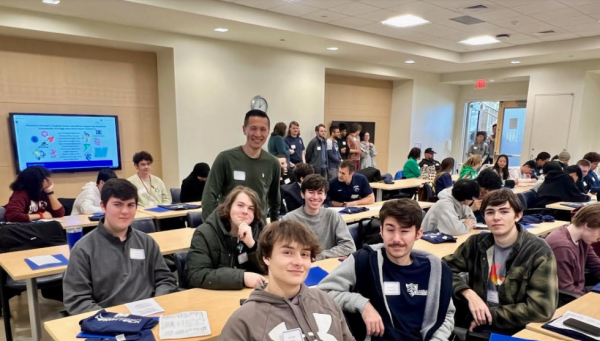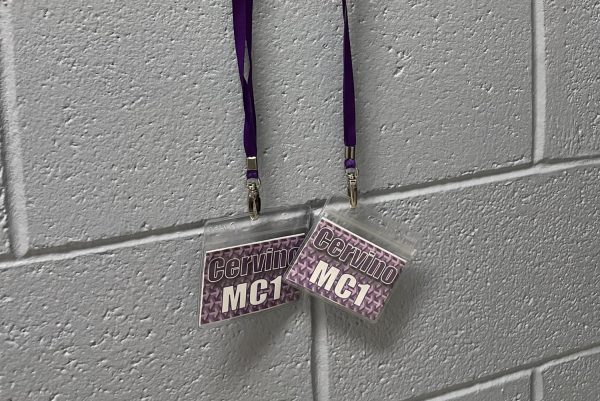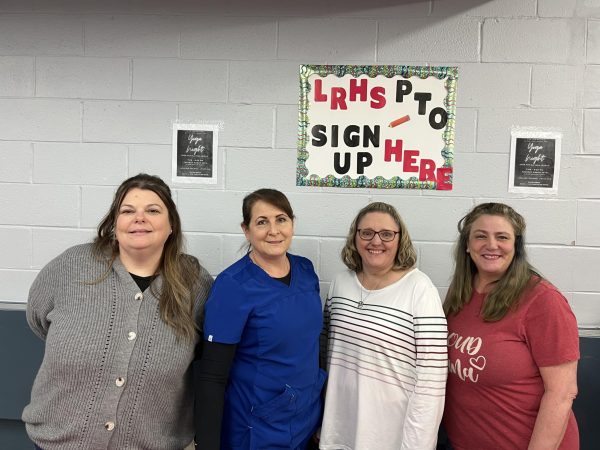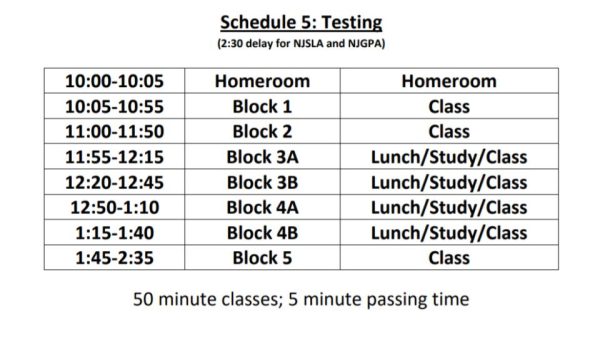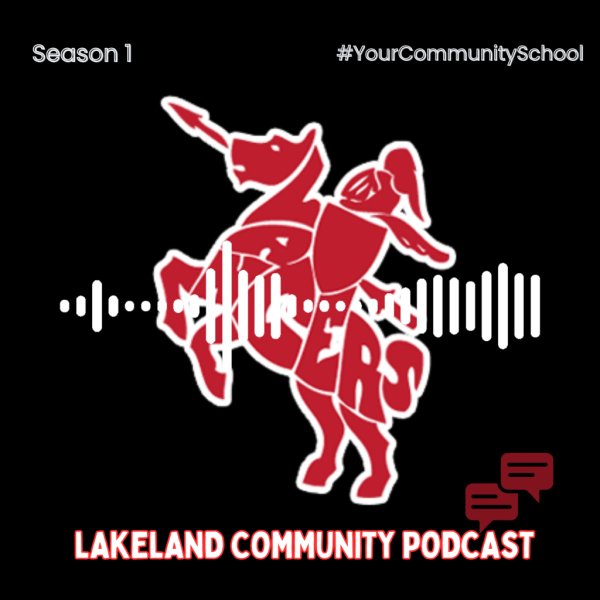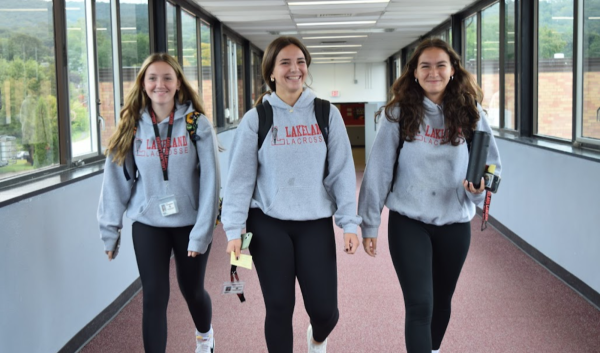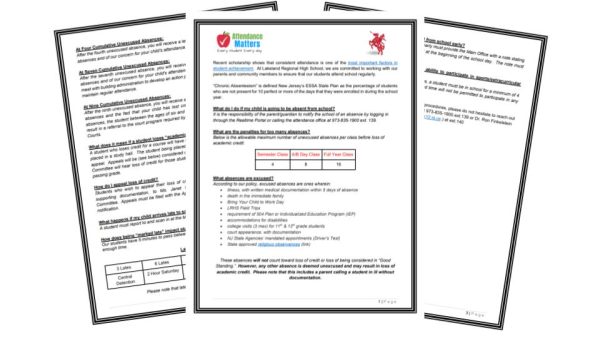Lakeland Takes on Social-Emotional Learning
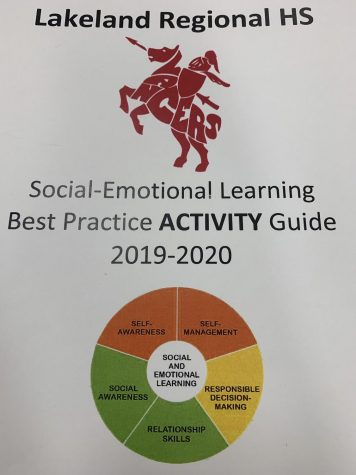
The guide given to Lakeland’s staff at the Social-Emotional Learning seminar.
The teachers and administrators at Lakeland have undergone training for the new social-emotional learning being promoted throughout the school for the 2019 to 2020 school year. Several new strategies and activities have been developed to allow this education to be put into effect, and teachers and staff have completed much training and planning over the past months to make the education’s outcome successful.
“Social and emotional learning (SEL) is the process through which students understand and manage emotions, set and achieve goals, demonstrate empathy for others, establish and maintain positive relationships, and make responsible decisions,” according to the Social-Emotional Learning Best Practice Activity Guide created by Lakeland.
Lakeland chose to pursue the idea of SEL for a few, significant reasons, including the following nation wide statistics listed in the guide: a 25% increase in adolescent suicide between the years 2010 and 2015, a double in the number of students hospitalized between the years of 2007 and 2015 for attempt or ideations, and for the fact that one in five children suffers from a mental disorder.
This idea to implement SEL began to develop at the end of last year’s school year. Mr. Michael Novak, Assistant Superintendent of Curriculum and Instruction, told The Ledger, “At the end of the year last year, we gave a survey to both staff and students and we asked them what they would like to do or what direction they would like to see Lakeland go in the future. And some of the students said that they would like a little bit more guidance on life after high school, and the staff essentially said the same thing, that content is important, but it’s the skills that we really teach students that matter in the future.” The staff then reflected upon themselves, and agreed on improving their ways of teaching students life lessons.
— In the state of New Jersey, there are five competencies of SEL: Self-Awareness, Self-Management, Social Awareness, Responsible Decision-Making, and Relationship Skills. The overall district goal was to promote social-emotional well being, while still aligning with these five requirements.
Now that the idea of SEL had been put into effect, the staff began to develop strategies, activities, and more ways to incorporate what they learned into their classrooms. Ms. Jamie Cawley, English teacher, is going to incorporate one SEL lesson per month into her classes. “I’ve planned activities for my students that I feel are relevant and helpful to their growth not only as students, but as people.” On one reason she finds this so important, she says,“Companies are looking for people who demonstrate a high level of emotional intelligence [the number one indicator to success], that is, they are self-aware, can self-regulate, are motivated, have empathy, and have excellent interpersonal skills.” Ms. Cawley’s goal is to teach her students these skills, even if that means taking a break from teaching content and focusing on SEL activities.
A professional development seminar was held on September 30, 2019 where the topic of SEL was discussed and presented by Mr. Novak. Each teacher received the Social-Emotional Learning Best Practice Activity Guide to develop a better understanding of this education and how it will advance our school. The guide also included an official list of activities for teachers to use within their classrooms.
The seminar also introduced the district goal of SEL. As explained by Mr. Novak, “So, we sat down with a group of teachers last year called the SkIP committee, an acronym that stands for School Improvement Panel.” Mr. Novak went on to explain that at this meeting, the group discussed what direction they want to go in as a district and decided they wanted to promote social-emotional well being.
In the state of New Jersey, there are five competencies of SEL: Self-Awareness, Self-Management, Social Awareness, Responsible Decision-Making, and Relationship Skills. The overall district goal was to promote social-emotional well being, while still aligning with these five requirements.
Finally, the SEL project has a few goals that are expected to be achieved. According to Mr. Novak, throughout the year, “we [the staff at LRHS] want to help students develop the skills to demonstrate confidence, exercise self-control, show initiative, deal with setbacks, develop grit, and develop empathy.” He states that the goal is to help students understand that it’s okay not to be perfect, as life is not perfect, and to give ways they can deal with setbacks and walk away with confidence.
Lakeland has taken one step further into understanding their students, helping them grow as a person, and preparing them with life lessons for the future thanks to the new social-emotional learning initiative.

Morgan is a senior at Lakeland, and is beyond excited to be this year’s Editor-in-Chief for The Lancer Ledger. This is her fourth year writing for the...


